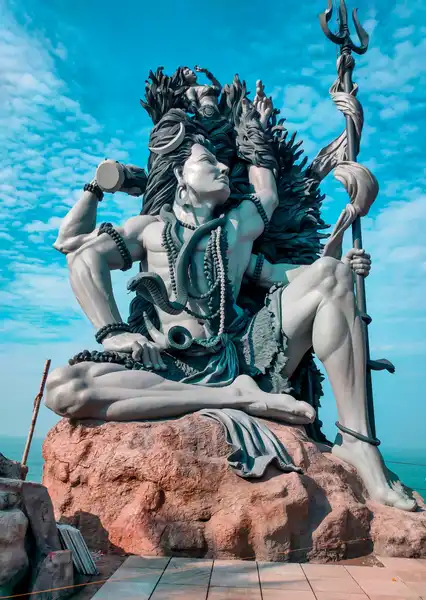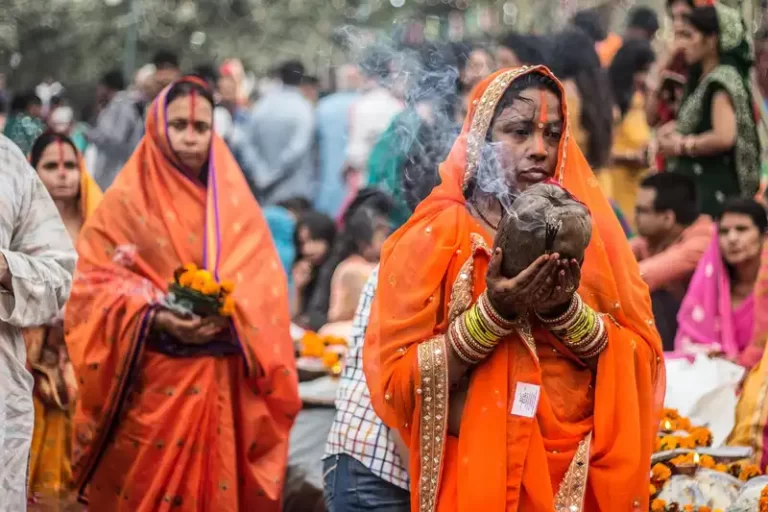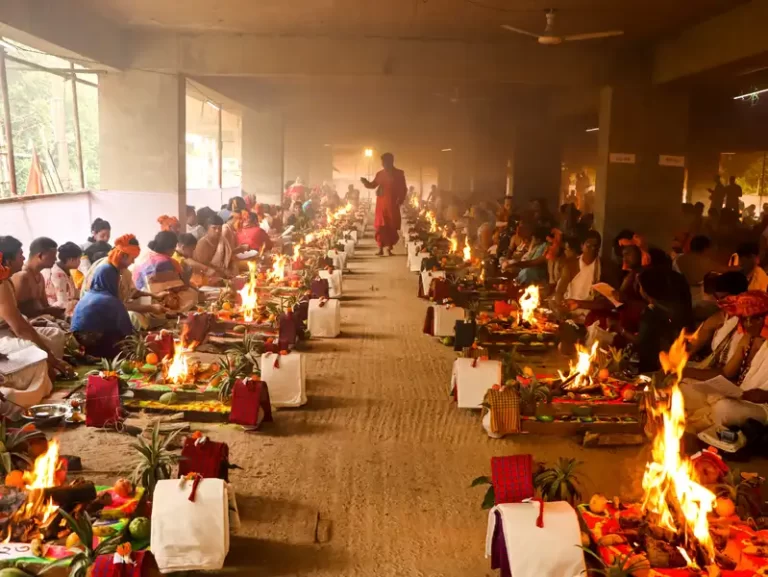Vastu Shastra – a glimpse into Sthapatya Upaveda

Vastu Shastra – an introduction:
Sthapatya, an esteemed Upaveda, renowned as Vastu Shastra, emerges from the Vedas, ancient Indian scriptures. This lore navigates architecture’s depths, orchestrating edifices that dance in sync with nature’s rhythms and cosmic symphonies.
Vastu Shastra orchestrates a symphony of architectural essentials: site curation, layout choreography, directional overtures, room sonnets, proportions’ harmonies, material palettes, and aesthetic crescendos. Rooted in the belief that a structure’s energetic flux and spatial composition weave the fates of its inhabitants—bestowing wellness, affluence, and concord.
Upaveda Sthapatya’s raison d’être is to birth spaces imbued with equilibrium, exuberance, and well-being. It extols the interplay betwixt abode and milieu, mindful of the sun’s traverse, zephyr’s whispers, elemental reverberations, and astral influences.
Vastu Shastra, its Key Concepts and Principles:
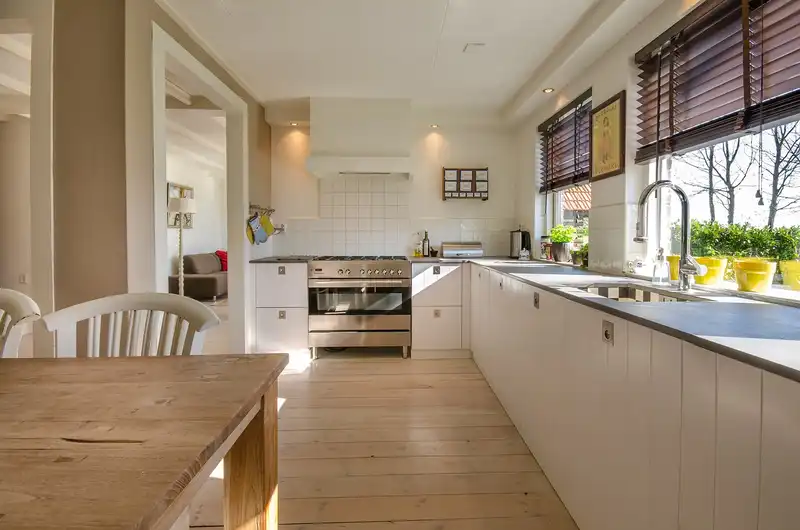
The Five Elements:
The core of Vastu Shastra resides in the doctrine of the five primordial elements—earth, water, fire, air, and space, collectively termed the Pancha Bhutas. These fundamental constituents are envisioned as the cosmic scaffolding, and their skillful fusion and equilibrium form the bedrock of crafting a habitat that resonates with serenity, be it for living or labor.
Directions and Orientation:
Vastu Shastra bestows profound importance upon diverse compass points and their attendant energies. The precise alignment of a structure with the cardinal directions is held in high regard. Every direction aligns with distinct elements, divine entities, and attributes. The arrangement and positioning of chambers and objects are deftly molded by these intricate intertwinements.
Vastu Purusha Mandala:
Vastu Purusha Mandala stands as a sanctified blueprint, embodying the energy lattice for erecting a structure. A symbolic embodiment of the cosmic entity, Vastu Purusha, it serves as a guidepost for siting rooms, gateways, and architectural components. The meticulous arrangement of these within the Vastu Purusha Mandala adheres to explicit protocols and principles.
Energy Flow and Balance:
Vastu Shastra accentuates the paramountcy of nurturing an unimpeded current of energy within a milieu. The disposition of entrances, apertures, and structural features is meticulously orchestrated to pave the way for the circulation of affirmative forces, while curtailing hindrances and adverse impacts.
Remedies and Corrections:
Vastu Shastra extends an array of remedies and adjustments for spaces beset by Vastu doshas, those imbalances that mar harmony. These redresses encompass repositioning objects, harnessing precise hues, elements, or substances, and invoking symbols or yantras to orchestrate energy accord.
When specific Grahas cast shadows over a structure, Vastu Shastra unfolds corrective rituals to quell their influence. These rituals might entail the infusion of particular shades, crystals, symbols, or yantras associated with the respective Grahas, harmonizing energies and forging a more positive ambiance.
It’s noteworthy that the infusion of Grahas into Vastu Shastra is rooted in astrological moorings and belief systems. While some ardently cleave to these precepts, others accord less weight to the astral facet. Consulting a Vastu virtuoso or astrologer stands prudent, their guidance tailored to your unique natal chart and the Vastu canvass of your space.
Application in Different Spaces:
Vastu Shastra’s tenets extend their embrace to an array of domains: dwellings, workplaces, trade hubs, sanctuaries, and even urban expanse. Each realm’s architecture and arrangement resonate with its distinct requisites and roles.
Vastu Shastra and Brahmasthan:
Brahmasthan, a pivotal concept in Vastu Shastra, the ancient science of architecture in India, epitomizes the core essence of a structure. “Brahma,” symbolizing cosmic consciousness, converges with “Sthan,” denoting place. This nexus forms a sanctified nucleus within a building, exuding auspiciousness and potency. Harnessing this zone rightly is believed to usher in equilibrium and affirmative energies throughout the edifice.
Positioned ideally at a building’s heart, encompassing roughly one-third of its expanse, the Brahmasthan influences life’s myriad facets. It thrives as a vital energy nexus, where celestial forces coalesce, channeling harmonizing energies through the entire structure.
Upholding the Brahmasthan’s sanctity involves maintaining its openness, devoid of impediments or weighty constructs. This fosters unhindered energy flow, averting imbalances. Hence, the Brahmasthan remains void of walls, pillars, or ponderous furnishings.
This epicenter serves various purposes contingent on a structure’s needs—central courtyard, linking thoroughfare, or communal arena. It beckons meditation, and prayer, or serves as a lodestar of positive energy.
In the presence of Vastu disharmony, the Brahmasthan accepts tailored remedies—yantras, crystals, or symbols—invoking recalibration. This recalibration reinstates equilibrium and amity.
The Brahmasthan stands as hallowed ground, it’s purposeful harnessing posited to enrich the occupants’ well-being, affluence, and spiritual aura. Yet, seeking counsel from a Vastu savant for context-specific guidance in accordance with your edifice’s uniqueness is judicious.
Vastu Shastra and Eight Directions:

Vastu Shastra, the age-old Indian architectural science, imparts profound meaning to the octaval compass points. Each cardinal direction resonates with distinct forces and components, and their judicious application is thought to usher in serenity and affirmative impact to a locale. The Eight directions in Vastu Shastra encompass:
North (Uttara):
In the realm of Vastu Shastra, the North direction basks in the aura of propitiousness for financial augmentation, vocational progress, and comprehensive opulence. It entwines with Kubera, the deity presiding over affluence and prosperity.
Northeast (Ishanya):
In Vastu Shastra’s narrative, the Northeast orientation stands as a realm steeped in exceptional auspiciousness. It embraces the water element, serving as a beacon for illumination, spirituality, and erudition.
East (Purva):
Within the tapestry of Vastu Shastra, the East compass point resonates with nascent commencements, burgeoning expansion, and vibrant vitality. Linked with Surya, the solar deity, this quadrant ushers in favor for education, artistic flair, and well-being.
Southeast (Agneya):
The Southeast azimuth, steeped in the fire element, embodies metamorphosis, dynamism, and aspirations in Vastu Shastra’s lexicon. Aligned with Agni, the fire divinity, this sector augurs propitiousness for commercial enterprises, entrepreneurial endeavors, and triumphant feats.
South (Dakshina):
The meridian of South encompasses foundations, fortitude, and safeguarding in Vastu Shastra’s realm. Yama, the guardian of the beyond, presides here, and this realm finds affinity with bedrooms, robust storages, and administrative realms.
Southwest (Nairitya):
The Southwest sector intertwines with the earth element, embodying steadfastness, anchoring, and protection within Vastu Shastra. Nirruti, the guardian of adversities, reigns over this domain, lending it affinity with master bedrooms, pivotal edifices, and security-oriented domains.
West (Paschima):
The West quadrant, bedecked with the hues of creativity, sentiments, and bonds, converges with Varuna, the water deity, in the tapestry of Vastu Shastra. This realm unfurls a favorable aura for creative quests, expressive discourse, and convivial mingling.
Northwest (Vayavya):
The Northwest realm, donned in the garb of air’s essence, heralds mobility, expeditions, and openings in Vastu Shastra’s narrative. Vayu, the wind divinity, graces this province, rendering it propitious for networking, camaraderie, and fiscal steadfastness.
In Vastu Shastra’s canvas, the choreography and disposition of chambers, gateways, and articles within a structure are orchestrated in harmony with these cardinal bearings. This artful alignment orchestrates energy currents and cultivates a poised and symphonic ambiance.
Vastu Shastra and Nine Grahas:

Within the realm of Vastu Shastra, the interplay and sway of Grahas (celestial bodies) are held in esteem. These Grahas radiate distinct energies, capable of shaping the prevailing equilibrium and accord within a locale. Vastu Shastra’s tenets recommend orchestrating the Grahas’ energies in synchrony with a structure’s form and blueprint. Herein lie a few facets at the crossroads of Grahas and Vastu:
Celestial Alignments: In the tapestry of Vastu Shastra, every graha dons specific orientations and elements. To elucidate:
The Sun (Surya) radiates from the East.
The Moon (Chandra) reigns in the Northwest, in consort with the air element.
The Mars (Mangal) asserts dominion over the South.
The Mercury (Budha) graces the North.
The Jupiter (Guru) finds haven in the Northeast, entwined with the water element.
The Venus (Shukra) kindles the Southeast, ablaze with fire’s touch.
The Saturn (Shani) finds resonance in the West.
The Lunar Nodes, Rahu and Ketu, shadowy entities, lay claim to the Southwest and Northeast realms respectively. Earth’s touch adorns the Southwest.
Strategic Positioning: Vastu Shastra weaves specific alcoves for chambers and pursuits within a structure, attuned to planetary influences. To illustrate:
The sanctum for devotion or introspection often finds its abode in the Northeast, basking in the spiritual embrace of Ketu and Jupiter.
The culinary domain frequently finds its niche in the Southeast, entwined with Mars’s fervent vigor to aid in gastronomic alchemy.
The haven of repose, often the master bedroom, finds its haven in the Southwest, enwrapped by Saturn’s shielding and anchoring energies.
The realm of study or labor takes root in the North or East, aligning with Mercury’s intellectual acumen and the Sun’s illuminating essence, respectively.
Vastu Shastra and Colors:

In Vastu Shastra’s panorama, hues wield sway over a space’s energies and resonances. Color choices are believed to shape ambiance, emotions, and harmony. While personal inclinations and cultural influences also factor in, here’s a compendium of Vastu color insights:
White: The quintessence of purity, lucidity, and positivity, white is a versatile hue. It’s often advised for walls and ceilings throughout the abode, amplifying luminance and spatial perception.
Yellow: Yellow radiates luminosity, buoyancy, and intellect. It graces spaces like prayer chambers, study havens, or lounges. Yet, a preference leans toward subtler shades, avoiding vivid or overpowering tones.
Blue: The color of serenity, tranquility, and repose, blue fosters a sense of calm. It’s favored for slumber zones and meditation nooks, nurturing relaxation. Generally, lighter blues hold sway over darker counterparts.
Green: Green, emblematic of nature’s vitality and accord, basks in spaces like living quarters, dining alcoves, and verandas. It nurtures a soothing aura, echoing equilibrium and rejuvenation.
Red: Radiating with fervor, red embodies vitality, ardor, and might. In moderation, it infuses warmth and vivacity into the dining realm or as an accent touch. However, for sanctuaries of rest, red finds minimal favor.
Orange: Vibrant orange heralds fervor, originality, and coziness. It enhances spaces like study corners, living areas, or convivial spheres. Still, opting for mellower orange tints, steering clear of intense shades, is prudent.
Pink: Blush-hued pink signifies love, compassion, and accord. For bedroom domains, especially those for partners, it kindles a romantic and serene ambiance. Lighter shades of pink hold sway.
Purple: The regal purple embodies spiritualism, wisdom, and opulence. It finds its niche in meditation chambers or enclaves dedicated to soulful pursuits. Opting for lighter shades of purple is suggested, in moderation.
It’s pivotal to recognize that these color counselings are broad directives. Your inclinations and cultural imprints also shape color choices. Opt for hues that resonate with your soul and foster a harmonious and cozy realm.
Vastu Shastra and Remedies:
Vastu Shastra extends a gamut of remedies to reinstate equilibrium and mitigate Vastu doshas. These measures aim to amplify energy currents and cultivate well-being and serenity. Here’s an array of common Vastu remedies:
Colors’ Embrace: Infusing precise hues into distinct zones can recalibrate energies. For instance, east’s aura welcomes light blues or greens, while the north resonates with subtle yellow undertones.
Reflective Allure: Mirrors’ strategic placement can augment energy flow and simulate spaciousness. They mirror and amplify affirmative energies or redirect any adversarial currents.
Botanical Emissaries: Indoor plants, vanguards of affirmative energy, invigorate spaces. They purify air, infuse a touch of nature, and orchestrate a harmonious atmosphere. Each plant encapsulates distinct qualities and energies, so selecting them tailored to each realm’s requisites is sagacious.
Yantras’ Enigma: Yantras, geometrical emblems of sanctity, encapsulate distinct energies. Placing yantras in congruous pockets of a structure can restore equilibrium and repel negativity. The Sri Yantra, Vastu Purusha Yantra, and Navagraha Yantra are among the frequently employed.
Crystals’ Radiance: Specific crystals bear unique energies, uplifting a space’s aura. Amethyst, linked to spirituality, graces meditation chambers and bedrooms. Pyrite, synonymous with prosperity, finds haven in wealth domains.
Light and Harmonics: Prudent illumination and mellifluous sounds—like wind chimes or bells—craft a soothing, sanguine ambiance. Sunlight’s touch reigns supreme, while soft, ambient lighting outshines the glaring.
Order’s Pinnacle: A pristine, uncluttered, and meticulously organized space is pivotal in Vastu’s narrative. Disorder disrupts energy flows, engendering stagnation. Regular decluttering and arrangement foster harmony.
Elemental Equilibrium: Vastu holds the quintessential quintet—earth, water, fire, air, and space—in equipoise. Infusing their semblances—artwork, natural elements, decor—enshrines this equilibrium.
Mindset’s Tapestry: Remember, executing Vastu remedies must be imbued with optimism and purpose. Moreover, these remedies often bear personal adaptations, molded by a space’s doshas and layout. Enlisting a proficient Vastu practitioner ensures bespoke counsel, tailored to your unique circumstances.
Vastu Shastra and Yantras:
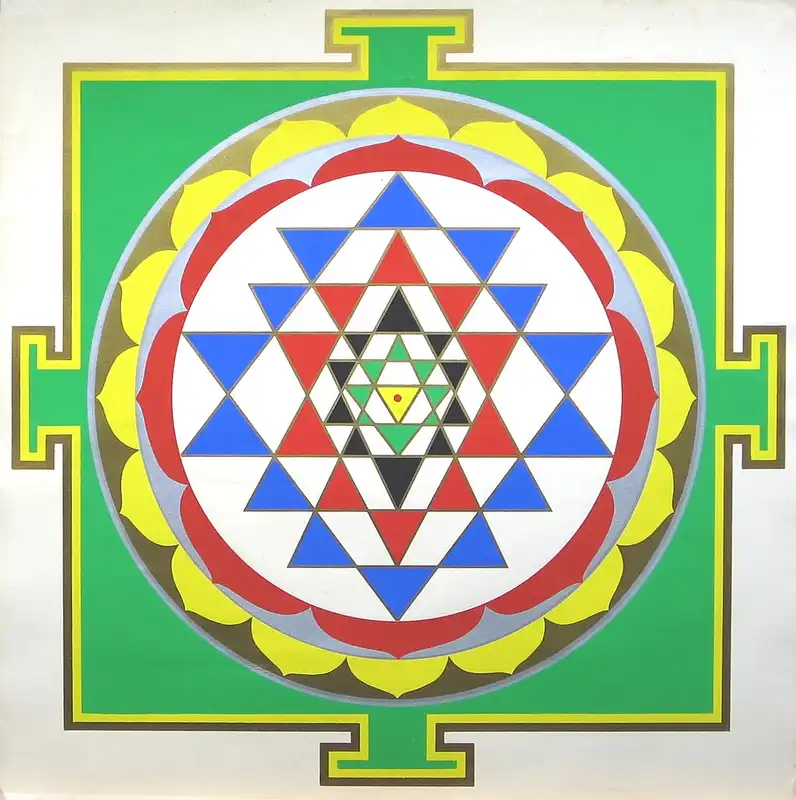
Vastu Yantras stand as sacred geometrical constructs, conduits of distinct energies and vibrations, entrusted with rectifying imbalances and fostering equilibrium. These yantras wield potency in nurturing positive energy currents and serenity. Herein lie some prominent Vastu Yantras:
Sri Yantra: A cornerstone of Vastu Shastra, the Sri Yantra resonates with cosmic energy. Emblematic of opulence, prosperity, and balance, it beckons affirmative vibrations and equilibrium.
Vastu Purusha Yantra: Engineered to amend Vastu discrepancies, the Vastu Purusha Yantra mirrors the cosmic vitality of the Vastu Purusha, the guardian of a structure. Its placement coaxes energy accord and dispels negativity.
Navagraha Yantra: The Navagraha Yantra, a nexus to the nine astral bodies of Vedic astrology, embodies celestial influences. By balancing planetary energies, it forges serenity and assuages planetary imbalances.
Kubera Yantra: Linked to affluence, opulence, and abundance, the Kubera Yantra is hailed for beckoning financial prosperity and engendering a milieu of plenty. Placing it within the wealth precincts of your abode or workplace is believed to augment financial well-being.
Meru Yantra: The three-dimensional embodiment of the Sri Yantra, the Meru Yantra, channels powerful auspices. It radiates positive energy and dispels hindrances. Often ensconced in prayer chambers or meditation nooks, it invokes an auspicious aura.
Gayatri Yantra: Encompassing Goddess Gayatri’s essence, the Gayatri Yantra kindles wisdom, enlightenment, and cognitive prowess. Enhancing intellect, fostering focus, and nurturing spiritual evolution, it finds a haven in study or meditation domains.
Ganesh Yantra: Guardian of obstacles’ demise and harbinger of triumph, the Ganesh Yantra summons auspiciousness, triumph, and prosperity. Its anchoring influence graces entrances or workspaces, auguring positivity.
Crafted from metals like copper or brass, these yantras find abode on walls, altars, or specific pockets within a structure. Anointing them with devotion and energy before placement augments their efficacy.
Crucially, selecting and situating yantras demands adept counsel from a proficient Vastu expert, as they can extend tailored recommendations, synergizing with your unique requisites and space layout.
Vastu Shastra and Paintings:
In Vastu’s realm, art’s curation and emplacement are pivotal, for they ripple through energy and ambiance. Here are some general artistic guidelines echoing Vastu’s wisdom:
Elevating Narratives: Seek paintings that portray affirmative narratives—landscapes, nature’s serenity, sacred symbols, or spiritual motifs. These visuals cultivate tranquility and harmony.
Auspicious Emblems: Favor paintings adorned with auspicious symbols—Om, Swastika, lotus, or divine beings. These symbols beckon blessings and affirmative energies.
Nature’s Embrace: Paintings capturing nature’s essence—landscapes, mountains, rivers, or blooms—infuse spaces with nature’s curative essence, fostering well-being.
Chromatic Accord: Harmonize painting hues with room color palettes. Opt for serene shades like light blues, greens, and earthy tones. Shun dark, discordant tones.
Placement Precision:
Living Room: North or east walls embrace paintings in the living area. Avoid unsettling or violent themes here.
Bedroom: Infuse bedrooms with serenity. Sidestep art depicting violence, sadness, or aggressive fauna.
These instructions orchestrate an artistic tapestry in harmonious concert with Vastu’s equilibrium. However, bear in mind that these counselings harmonize with your distinctive setting. A Vastu adept can offer bespoke insights, aligned with your singular space and requisites.
Office: Infuse the office with paintings that infuse inspiration and drive. Depict success, expansion, or vistas that kindle a constructive workspace.
Puja Room: Adorn the puja room with deity portraits or sacred symbols, fostering a sanctified and divine aura.
Size and Balance: Paintings’ dimensions should correspond to walls and chambers. Overwhelming or diminutive art can skew visual harmony. Opt for proportions resonating with your wall expanse and room dimensions.
Personal Synergy: Your affinity for art and its resonance matters. Select paintings that harmonize with your inclinations, infusing joy and positivity.
Crucially, these directives form a foundational scaffold. However, personal tastes, cultural nuances, and individual convictions all shape art choices. At its core, your environment should be a haven of joy, inspiration, and wellness.
Conclusion:
Vastu Shastra, an ancient Indian architectural science, offers a compass to craft spaces resonating with nature’s cadence and cosmic currents. This tapestry fosters equilibrium, nurturing wellness, affluence, and spiritual evolution.
Embracing diverse structures—dwellings, temples, offices—Vastu unfurls its design tenets. It orchestrates room placements, entrances, windows, and even hues and materials. Its canvas molds energy currents and weaves a tapestry where physical, mental, and spiritual harmony intertwine.
Notably, Vastu’s brush strokes vary, adapting to regional, cultural, and architectural hues. Some strokes are born from empirical observation, others steeped in culture’s embrace. Modern interpretations strive to harmonize Vastu’s essence with contemporary living and architectural paradigms.
I aspire for this article to provide you with assistance. Should you discover value within these words, kindly contemplate sharing them with your loved ones. I invite you to spare a moment to offer your thoughts and appraisals below. For further remarkable content akin to this, I encourage you to delve into our website. Additionally, I extend an invitation to subscribe to my YouTube channel for forthcoming materials of similar nature. Lastly, feel unrestrained to establish a connection with me through social media. Wishing you a splendid day ahead!
हरि ॐ तत्सत्
FAQs:
Here are some frequently asked questions (FAQs) about Vastu Shastra:

